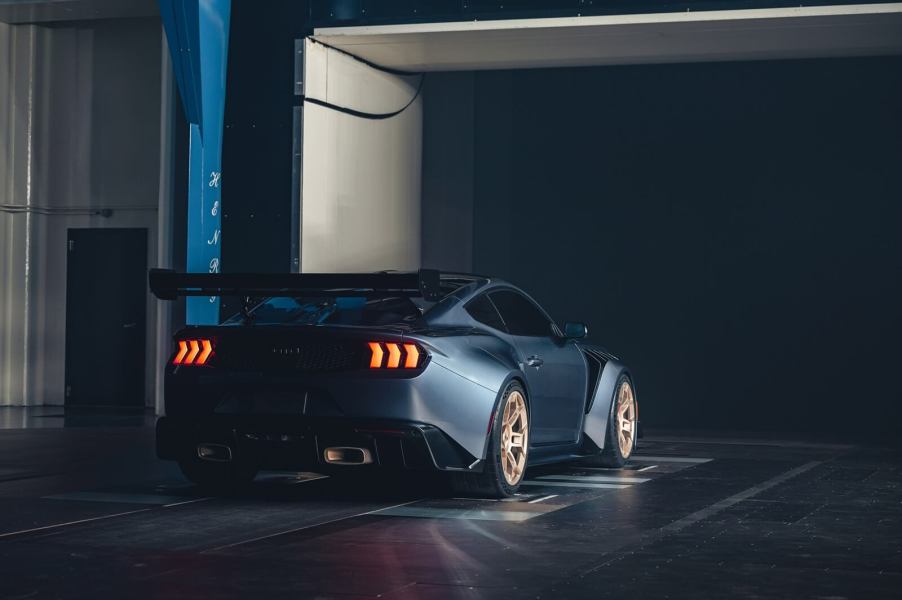
The Ford Mustang GTD Is Less of a Mustang and More of a Track-Ready Supercar
Ford shocked fans worldwide by putting its cutting-edge speed efforts behind a Mustang rather than another iteration of its mid-engine GT supercar. But rather than turning an existing platform like the S650 Dark Horse into an apex-clipping track weapon, Ford took a ground-up approach to building a taut, circuit-killing supercar with a Mustang badge. That’s right, it’s the 2025 Ford Mustang GTD, the wildest model in the nameplate’s illustrious history. But, in reality, it’s not much of Mustang. It’s so much more.
The Ford Mustang GTD is a long list of superlatives and less of a Mustang than a purpose-built race car
Ford has its eyes trained on racing. For starters, the Blue Oval has a GT3 and GT4 model destined for races up to and including the hallowed ground of Le Mans. However, Ford also leaned on its classic “Race on Sunday, sell on Monday,” mantra. And that latest “Sell on Monday” focal point? None other than the Ford Mustang GTD.
Now, some folks will read the word “Mustang” and think of a heavy, arguably lazy albeit muscular pony car. However, the GTD is something different. Admittedly, there are parts of the GTD formula that sound familiar: rear-wheel drive (RWD) and a supercharged 5.2L V8 engine married up to a TREMEC transmission. It sounds like an evolution of the last GT500. However, that’s where the similarities end.
The 2025 Ford Mustang GTD is less of a member of the Mustang lineup than it is a track-bred racecar. As you would expect, the GTD produces gobs of power from its supercharged V8. In fact, Ford is targeting over 800 horsepower. As such, if you consider the GTD a formal part of the Mustang family, it will be the most powerful production Mustang ever.
But the GTD’s point, its raison d’etre, is its track chops. For instance, the GTD’s active aero is so dramatic, it exceeds the allowable standards of the GT3 racecar. In fact, Ford CEO Jim Farley is so confident in the Ford Racing and Multimatic collaboration car that he claims it has the potential to beat the Porsche 911 GT3 RS at its own game. That’s a tall order.
Of course, the GTD isn’t the first Ford Mustang with racing DNA. Far from it. Shelby Mustangs, from the original GT 350 to the S550 GT500, work in race-ready componentry. For instance, the now-discontinued GT500 worked in optional Michelin Pilot Sport Cup 2 rubber, surface-gripping downforce, and fade-resistance Brembo brakes.



